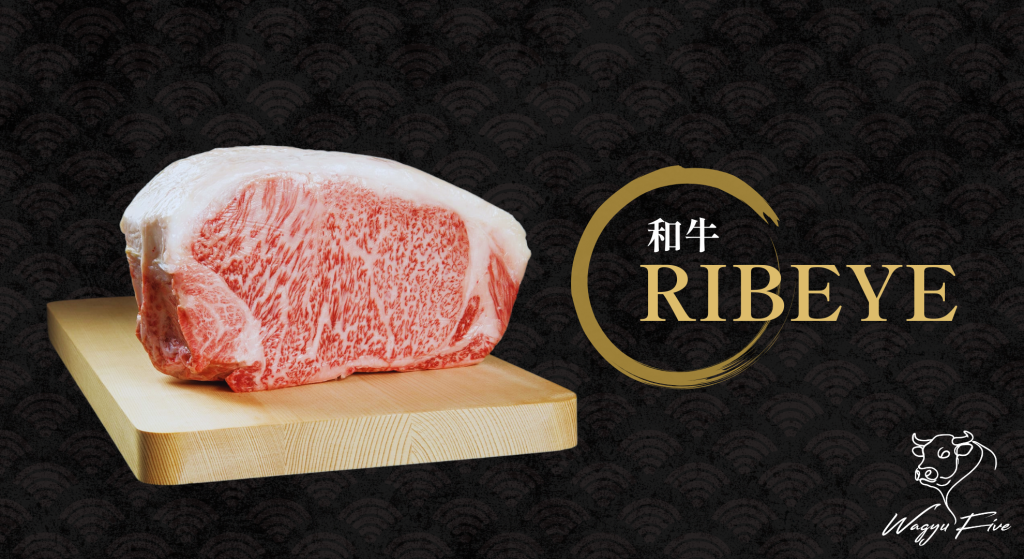Japanese Wagyu Ribeye is not just a meal, it’s an experience. Known for its buttery texture, intricate marbling, and unmatched flavor, this premium beef part has captured the hearts (and taste buds) of food lovers worldwide. For the readers of this, Wagyu ribeye is the perfect indulgence for a special occasion or a gourmet meal at home. Whether you’re a seasoned chef or a curious beginner, this guide will unlock the secrets of Wagyu Ribeye, from its characteristics to ways of cooking it.
What is a Wagyu Ribeye?
A Wagyu Ribeye is a premium part of beef from Wagyu cattle, renowned for its extraordinary marbling, tenderness, and flavor. The ribeye is taken from the rib section of the cow, specifically from ribs 6 to 12, and is celebrated as one of the most luxurious and flavorful steaks in the world.
Key Characteristics of Wagyu Ribeye:
- Exceptional Marbling:
Ribeye is a beef part known for its marbling, which refers to the fine, intramuscular fat distributed throughout the meat. Aside from that, Wagyu beef is also known for its intense marbling. Those two factors result in a Wagyu ribeye being a part of meat with a huge emphasis on its marbling which gives it its buttery texture and rich, juicy flavor. - Tenderness:
The high fat content in Wagyu ribeye ensures that the meat remains tender and almost melts in your mouth when cooked properly. - Rich Flavor:
Wagyu ribeye has a deep, buttery taste complemented by a subtle sweetness and a rich umami flavor that lingers on the palate.
Why Is Wagyu Ribeye is Unique and One of the Favorites
Wagyu is already known for its amazing marbling in its meat. On the other hand, the beef part ribeye is known to be a part that has the most marbling among the beef parts. Combine those two factors and you got the pinnacle of marbling which is a wagyu beef part with the most intramuscular fat in its meat.
The Role of Marbling in Ribeye
Ribeye is known for its marbling, rated on a scale from 1 to 12. Ribeye has the most marbling among all the beef parts. Japanese A5 Wagyu Ribeye boasts marbling scores of 10 or higher, making it a prized delicacy.
Marbling Benefits:
- Enhances tenderness and juiciness
- Improves flavor distribution
- Melts at low cooking temperatures for optimal texture
How Much Ribeye Can Be Produced from Each Wagyu Cow?
Wagyu ribeye is sourced from the rib section of the cow, specifically ribs 6 through 12. This beef part represents a small portion of the overall carcass, which limits the quantity available per animal.
Carcass Weight and Yield Estimated Ribeye Production:
A mature Wagyu cow typically has a live weight of 540 to 720 kilograms, resulting in a carcass weight of around 320 to 410 kilograms after slaughter. In that carcass, ribeye only makes up approximately 3% to 4% of the total carcass weight which is about 9 to 11 kilograms. This includes both the ribeye steaks and other smaller portions derived from the same rib section. In total, a wagyu cattle can have around 10-12 1 inch ribeye steaks.
Why the Ribeye Yield is Limited:
Ribeye is a specific part of the cow’s rib with precise trimming requirements (such as removing the bones and fat cap) to showcase its marbling. Because of this, only a portion of the rib section meets the standards for high-grade Wagyu ribeye, further reducing the quantity of said ribeye available for sale.
Selecting and Storing Wagyu Ribeye
When getting your wagyu ribeye, it’s important to consider which one to pick and how you’re going to store it before cooking. So, here’s our tips regarding that:
Tips for Choosing Quality Wagyu Ribeye
When purchasing Wagyu Ribeye in Manila, make sure to check the following:
- Marbling: Since marbling is the spotlight of ribeyes, it’s important to get one with uniform and one with the most marbling.
- Certification: Verify the seller’s credentials and source to ensure that the wagyu ribeye is authentic.
- Price: Make sure to be aware of the standard pricing of the product in the market. If it’s too cheap, then it might be fake wagyu. If it’s too expensive, then you might be getting ripped off.
Storing Wagyu to Preserve Its Flavor
- Refrigeration: Store in the coldest part of the fridge, wrapped in parchment paper or vacuumed sealed, for up to 3 days. Make sure not to forget the parchment paper of vacuum sealing so that you won’t lose the meat’s moisture.
- Freezing: For longer storage, vacuum-seal and freeze for up to 6 months. Thaw in the refrigerator overnight before cooking. Make sure that you thaw it slowly so that it won’t ruin the quality of the meat.
Comparing Wagyu Ribeye to Other Wagyu Beef Parts
Ribeye is often regarded as the pinnacle of beef parts, but how does it stack up against other popular options? Let’s take a closer look at what sets ribeye apart from parts like filet mignon, striploin, and sirloin.
Ribeye vs. Filet Mignon
Filet mignon is renowned for its incredible tenderness that you can get from the loin part, thanks to its lower fat content and fine-grain texture which is the preferred by the people that likes leaner meat better.On the other hand, ribeye, with its abundant marbling, delivers a richer and juicier, making it the preferred choice for those seeking depth of fatty flavor alongside tenderness.
Ribeye vs. Striploin (New York Strip)
Striploin, also known as New York strip, offers a leaner, firmer texture with a solid beef flavor with a really satisfying chew. On the other hand, ribeye offers a much more tender texture thanks to its fat content, giving each bit a melt-in-your-mouth experience.
Ribeye vs. Sirloin
Ribeye wins if it’s just marbling we’re talking about. There’s no other part of wagyu beef that will top ribeye when it comes to marbling, making it a really favorite part for those who love fatty meat. On the other hand, sirloin is known and loved for its balance when it comes to flavor and texture. It is leaner and less tender than ribeye, but that also makes the sirloin quite versatile for other types of cooking.
Ways to Cook Wagyu Ribeye
When cooking wagyu ribeye, it is important to preserve the marbling of the meat so that you can enjoy its flavors to the fullest. So, here are some of our recommendations on how to cook your wagyu ribeye without sacrificing the juices of the meat:
Panseared
Pan-searing is one of the most popular and effective ways to cook Wagyu ribeye, as it emphasizes the part’s natural marbling and flavor. Searing high heat creates a golden crust that contrasts beautifully with the tender interior.
- Cooking Tips: In searing the meat, make sure that the temperature of your pan is high and that you don’t cook it for long, this is done so that you can create the golden crust on the surface while keeping the inside medium-rare doneness. We also strongly suggest using thick cuts of meat to achieve the crispy crust and juicy inside.
- Recommendation: Wagyu ribeye is best enjoyed medium to medium-rare to preserve its delicate fat and juicy texture. Overcooking wagyu can diminish the signature buttery mouthfeel and rich flavor.
Roasted
Roasting Wagyu ribeye is perfect for thicker parts or larger portions, such as a whole ribeye roast. Slow, even heat allows the fat to render gradually, resulting in a tender, juicy steak with a rich depth of flavor. Although roasting needs a lot of time and preparation to perform, it is worth it since it allows the use of herbs and aromatics to complement Wagyu’s natural taste.
- Cooking Tip: Make sure to control the temperature in order to make sure that you don’t lose all the fat and juices of the steak.
- Preparation Tip: When marinating your meat, make sure not to overseason the meat. Although herbs are fine, too much usage of salt and salty sauces will overpower the natural flavor of the Wagyu beef.
Beef Pepper Rice
Now if you are a rice lover, then this next recommendation is for you. Beef pepper rice is a simple dish that is popular in Japan as a sweet and savory dish that only takes a few minutes to make. Traditionally, it is rice with corn, green onions, and thin strips of stir fried beef seasoned with salt, yakiniku sauce, and black pepper.
- Cooking Tip: Make sure to only use a little bit of Wagyu fat on the dish since the fat on it will also melt and serve as oil.
- Recommendation: We recommend not to use too much seasoning for your Beef Pepper Rice so you can still savor the natural flavors of your Wagyu Beef.
Why Wagyu Ribeye Deserves a Spot on Your Plate
Japanese Wagyu Ribeye is more than just a steak; it’s a testament to culinary craftsmanship and indulgence. With its exceptional marbling, buttery texture, and rich flavor, it’s no wonder this beef part has become a symbol of luxury dining. Whether grilled to perfection or roasted for a special occasion, Wagyu Ribeye guarantees an unforgettable meal.
For Manila residents, the opportunity to savor this delicacy is just a click away, you can get your Wagyu ribeye from trusted sources and cook it even at home!



